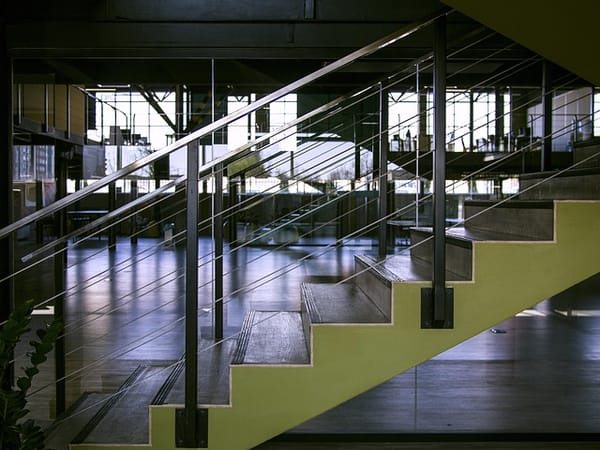Stair safety – 8 safety features your stairs must have
Over 70% of slip, trip and falls injuries are related to stairs or falling from one elevated level to another. Further, 60% of deaths related to slips, trips and falls are a direct result of stairs being involved. Many factors lead to these falls and this article examines some of the causes and controls that could be considered to increase stair safety.
Stairs are a regular feature at many workplaces. Lifts, ramps and other flat surface options are increasing in the design and specification stage for newly built environments. Unfortunately for existing installations, stairs are a necessary requirement and cannot be avoided. They are a cost-effective method for gaining access to elevated environments and from floor to floor. These are a far safer alternative to a ladder and can incorporate some great design features like hand rails, horizontal treads and landings to allow users to climb and descend safely.
Footwear, lighting, liquids and condition can all contribute to risks when using stairs. Apply the safety information provided here to reduce the risks stairs pose.
8 safety features to include in your staircase design
Here are eight desirable features when it comes to building stairs:
- anti-slip treads that are impervious to liquids;
- tread depth and width dimensions as per the above referenced legislation and standards;
- nosings and cappings to aid the grip of the tread;
- contrasting strips that allow easy identification of the change of height;
- tactile bumps at the entrance to steps and stairs;
- handrails to provide hand grip and contact;
- lighting exceeding 50 lux to provide adequate visibility; and
- matte finished surfaces – avoid the use of patterned coverings or carpets if possible.
Good housekeeping is also key. For example, ensure spills and liquids are promptly cleaned up to avoid a slip hazard.
Dimensional inconsistency and other attributes
One of the biggest design flaws with stairs is inconsistency in the spacing and depth. When the user expects stairs to be uniform and they are not, it can result in a trip or stumble. The difference between individual step heights, called the rise, should be +/- 5mm. There are a number of other critical dimensions cited in the above standards and codes.
Good design is not enough
Even if the stairs are designed well, the users still need to follow some simple practices when using them. Use of posters as reminders are a good idea, but follow up with feedback to users when they don’t exercise good stair safety.
To use stairs safely, workers should:
- always hold the handrail;
- avoid carrying loads with two hands;
- don’t rush or skip steps;
- if the stairway is wide enough, stick to the left;
- not read or use mobile phones; and
- ensure suitable footwear is worn.
Where can you find further guidance on safe stair design and use?
A number of publications can provide guidance and give specific direction around the design and use of stairs. The Building Code of Australia (BCA), National Construction Code (NCC) and the Australian Standard AS 1657 are excellent sources of information. They contain valuable information related to the design and suitability of stairways. You can also receive advice from industry bodies such as Master Builders and the Housing Industry Association, and also industry advisers like the Working at Heights Association.
From the experts behind the Health & Safety Handbook, the Bulletin brings you the latest work health and safety news, legal updates, case law and practical advice straight to your inbox every week.

